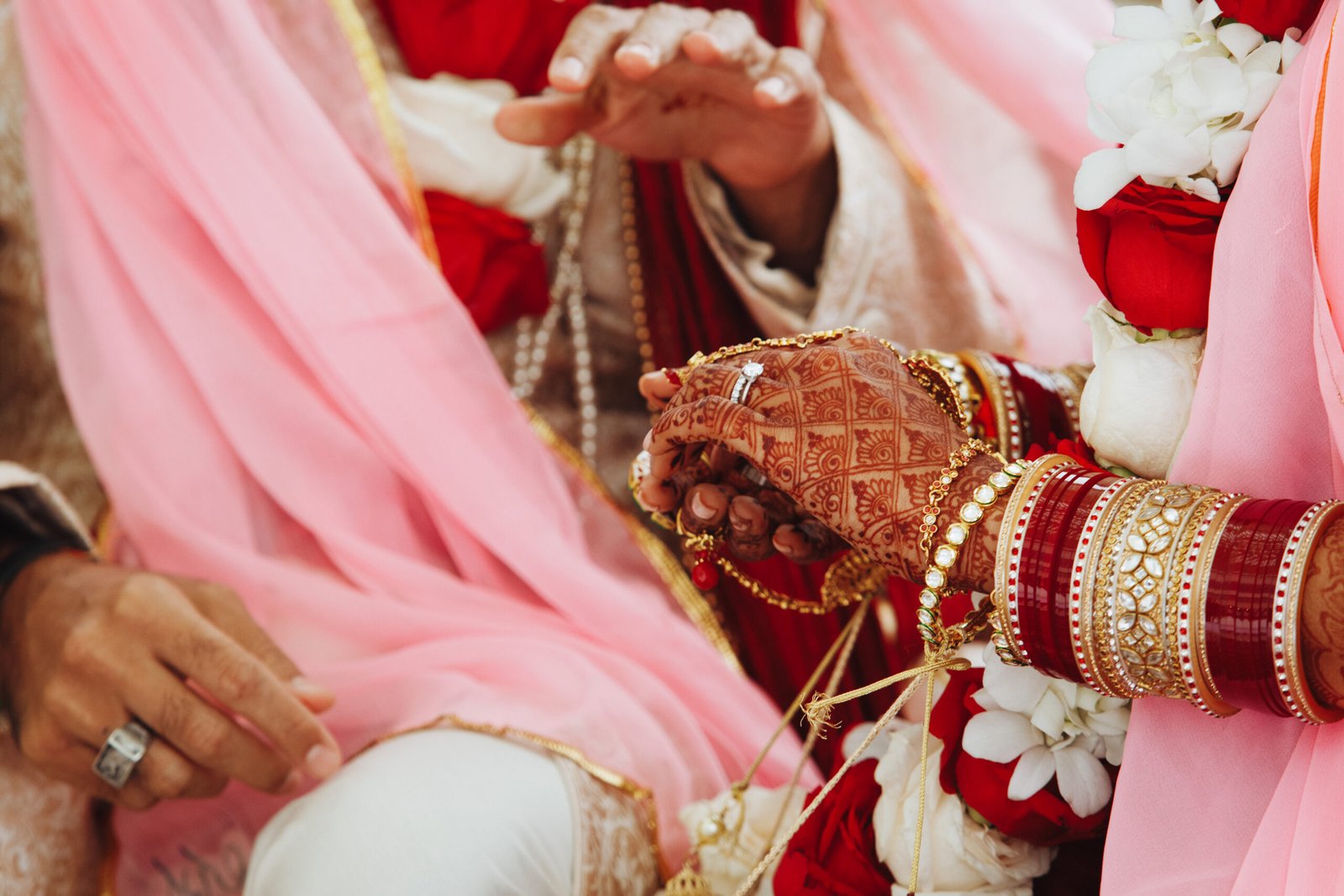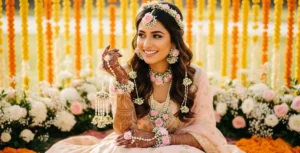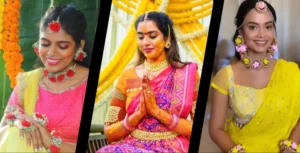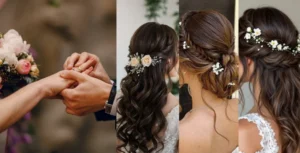Weddings in India are a grand affair, rooted in tradition, culture, and vibrant celebrations. These are important cultural occasions that showcase the diversity and wealth of the nation, not only rituals. Of all the geographical differences in Indian weddings, the ones from the North and the South are most notable.
Although they are both defined by rituals, enjoyment, and an abundance of colors, they separate greatly from one another. In this blog, we take a look at special features that distinguish weddings in South India from weddings in North India.
10 Ways South Indian Weddings Are Different From North Indian Weddings
1. Ceremonies and Rituals
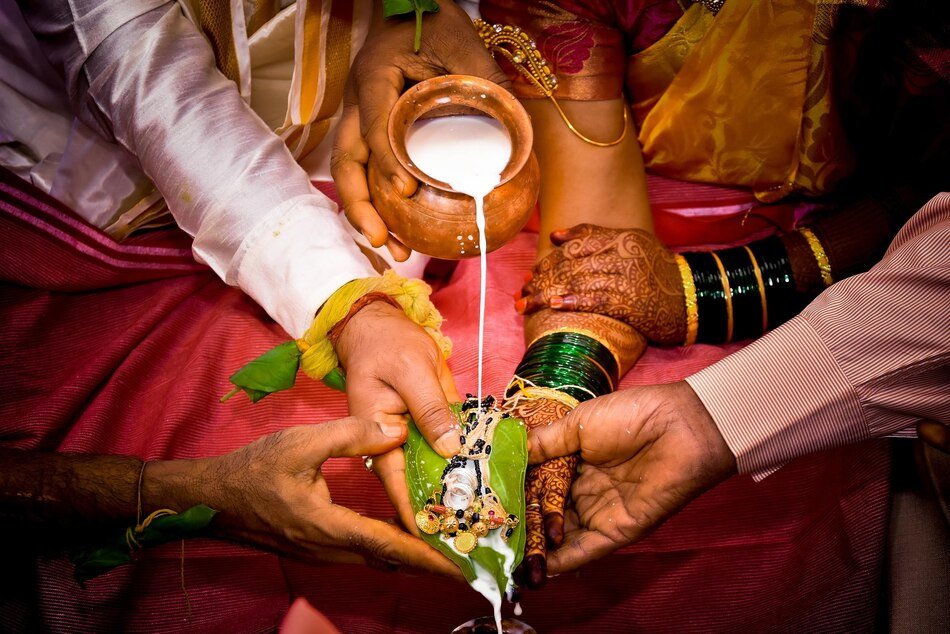
Typically, South Indian marriages are marked by ornate ceremonies that have their roots in religious and traditional traditions. Every event has great meaning, from the auspicious “Muhurtham” to the exchanging of garlands and the tying of the sacred thread (the “Mangalsutra”). On the other hand, North Indian weddings are distinguished by customs like the “Haldi” ceremony, “Sangeet,” and the lighthearted “Joota Chupai,” in which the bride’s sisters hide the groom’s shoes.
2. Jewelry and Outfit
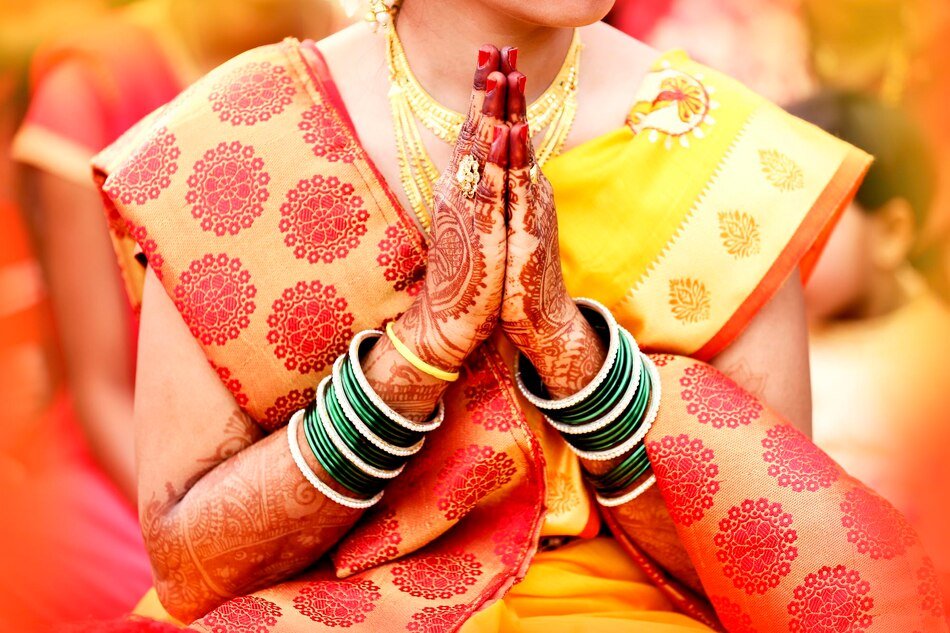
The bride and groom’s jewelry and clothes are among the most obvious contrasts. Brides in South India usually wear a traditional silk saree, which is sometimes adorned with elaborate gold jewelry, such as “Temple jewelry,” which is renowned for its religious themes. North Indian brides, on the other hand, choose to wear colorful sarees or lehengas with ornate gold jewelry pieces like the “Polki” and “Kundan” sets.
3. Food
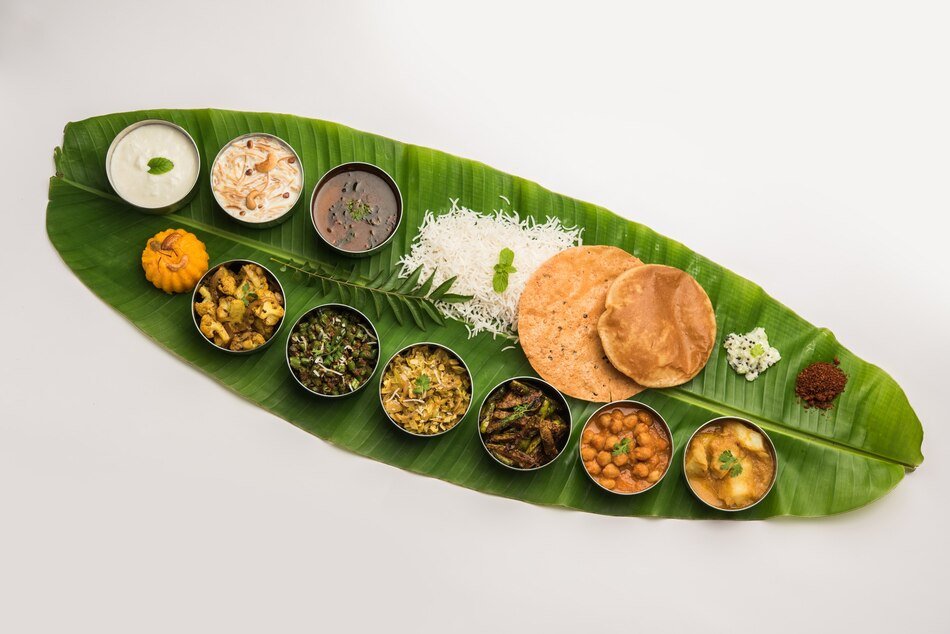
Both North and South weddings revolve heavily around food, which reflects the diverse culinary traditions of each area. The cuisine served at South Weddings is known for its delicious assortment, including classic dishes like dosas, idlis, vadas, and several rice preparations. Though there are non-vegetarian options as well, the focus is on tasty vegetarian food. On the other hand, North weddings feature a wide variety of food, from rich curries and flavorful kebabs to rich desserts like jalebi and gulab jamun. Highlights of North wedding feasts also include delicious biryanis and dishes from the Tandoori kitchen.
4. Venue and Decor
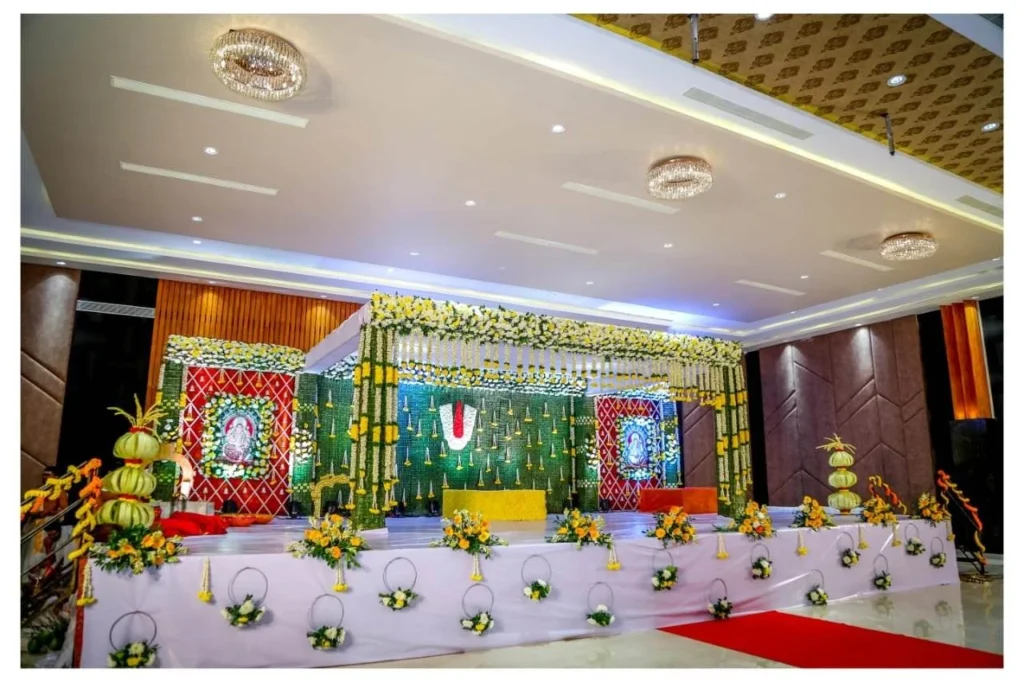
There are big differences in the atmosphere and style of weddings between the two areas. Traditional floral arrangements and motifs are common in South Indian marriages when venues are decked out with mango leaves and fragrant jasmine flowers. On the other hand, expensive decorations, such as intricate stage sets, vibrant draperies, and elaborate floral backdrops, are characteristic of North Indian marriages.
5. Dance and Music
Indian marriages are not complete without music and dancing, which heighten the jubilant spirit and joyous ambiance. Traditional instruments like the nadaswaram and mridangam accompany classical dances and music like Bharatanatyam and Carnatic music, which take the stage during South marriages. On the other hand, vibrant folk dances like the gidda and bhangra, backed by the sounds of the shehnai and dhol, are often associated with North Indian marriages. North Indian wedding celebrations often heavily involve Bollywood music and dance performances, which raises the entertainment value.
6. Sending out invitations
Traditionally, South Indian marriage invitations are lovely and modest, frequently with religious themes, lucky charms, or pictures of gods. The focus is on accurately and concisely expressing the key elements of the marriage ceremony. North wedding invites, on the other hand, are lavish and elaborate, with rich designs, vivid colors, and embellishments like foiling, embossing, and laser-cut detailing. These invitations are works of art that capture the opulence and grandeur of North Indian marriages.
7. Pre- and Post-Wedding Traditions
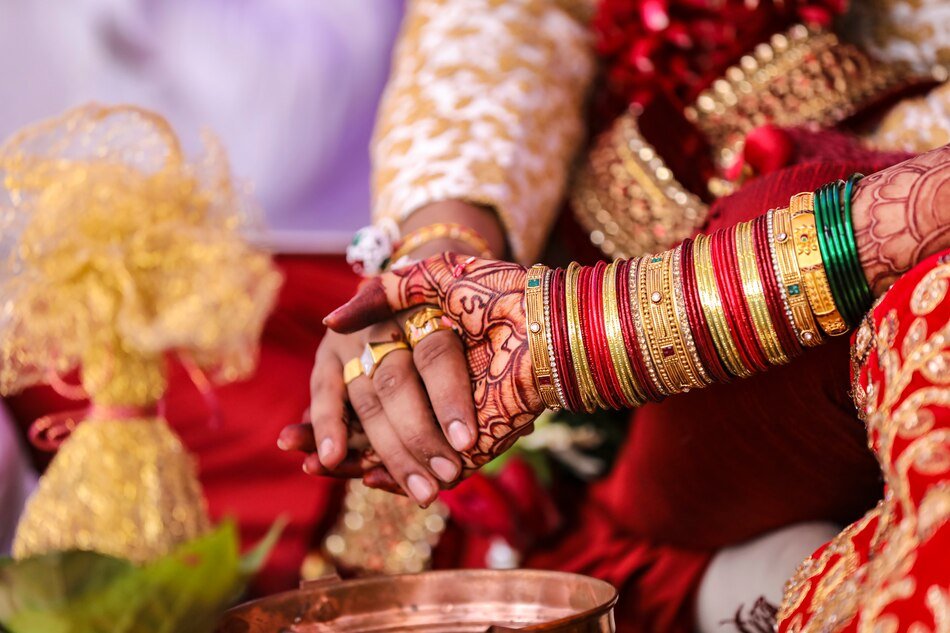
Pre-wedding rituals are performed for both North and South marriages, while different post-wedding ceremonies are held after the wedding which differs in importance and custom. Pre-wedding rituals such as the mehendi ceremony and Nischayathartham (engagement) are performed simply and solemnly in South Indian marriages. The Grihapravesham ceremony, which welcomes the bride into her new house, and the Saptapadi ceremony, which involves taking seven steps around a sacred fire, are post-wedding customs that represent the couple’s journey together. Pre-wedding rituals like the Sangeet and Haldi ceremonies are vibrant events full of dancing, music, and fun at North Weddings. The Vidaai, or bride’s goodbye, and celebration are post-wedding traditions where guests bestow blessings and well wishes on the newlyweds.
8. Regional Influence
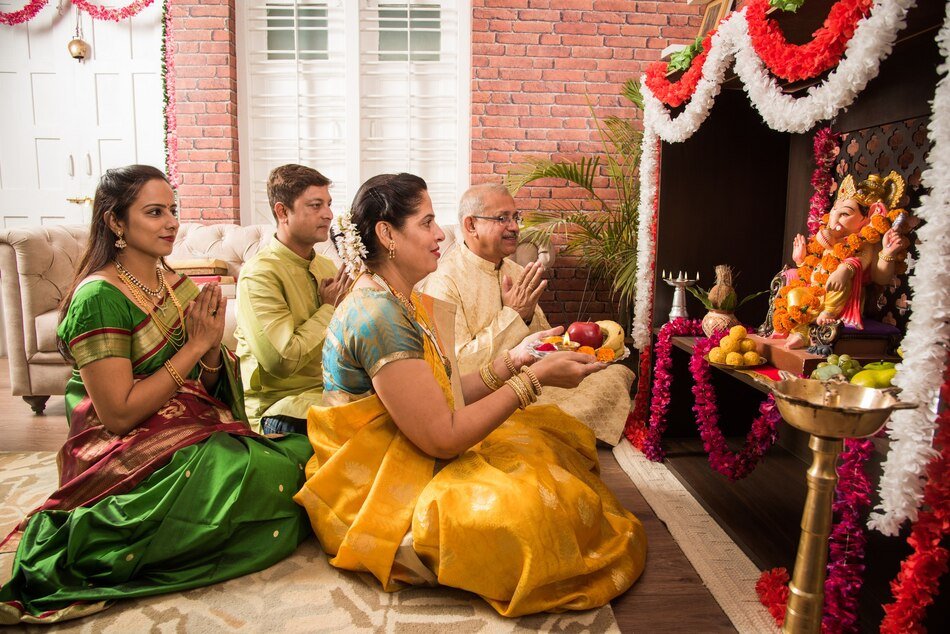
The differences in wedding rituals and traditions are further influenced by the diversity found in both North and South India. Within these more general categories, every state and area has distinctive customs, dress, food, and cultural activities that represent the diverse fabric of Indian history. Regional influences define the entire wedding experience and lend depth to its cultural significance, as seen by the vibrant traditions of a Punjabi wedding and the serene simplicity of a Tamil Brahmin wedding.
9. Cosmetics
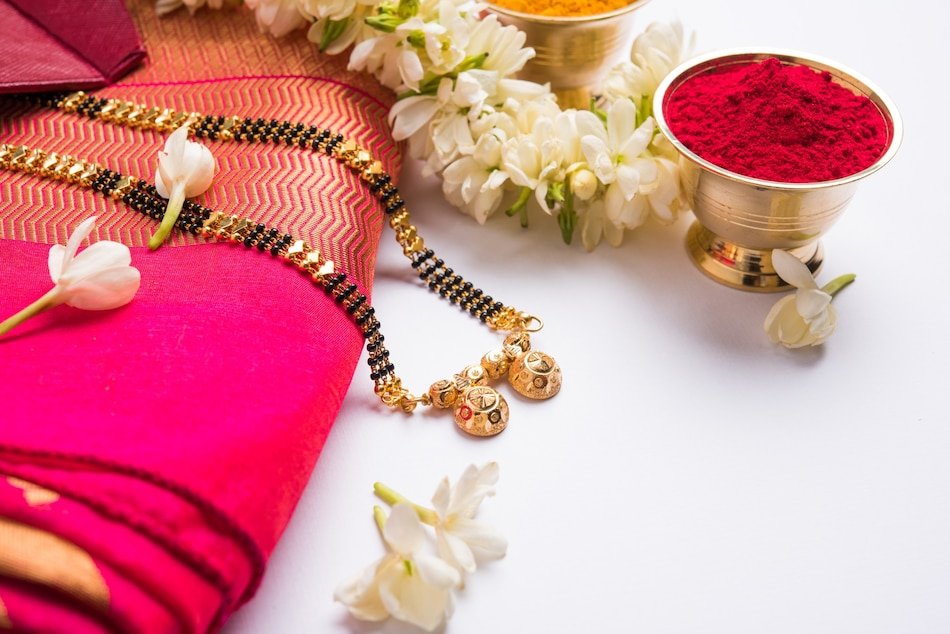
The bride’s makeup is usually more delicate and exquisite, with an emphasis on the skin, during any North Indian marriage. The bride may have a natural, luminous complexion with subdued eye makeup and a neutral lip color. She may also be dressed in a classic North lehenga or saree and heavily adorned in gold or diamond jewelry. The bride may also get henna applied to her hands and feet. The South bride, on the other hand, is somber. Typically, the bride wears bright, vivid makeup that emphasizes her eyes. The bride might have on a traditional South Indian saree, jewelry, vivid lipstick, thick eyeliner, and eye shadow.
10. Length of Celebrations
South Indian marriages are noted for taking place over longer periods—three to five days, on average. Families have plenty of opportunities to spend time together and participate in religious ceremonies because each day is devoted to particular rituals. North weddings, on the other hand, are usually shorter—one to three days—and feature loud music, dancing, and cultural events. Both kinds of weddings are treasured celebrations of love and tradition, despite their varying lengths.
Conclusion
In conclusion, South Indian marriages and North Indian marriages each offer a unique and enchanting glimpse into India’s diverse cultural landscape. These weddings showcase the rich tapestry of traditions that truly make India exceptional, from the elaborate ceremonies and lavish feasts to the lively music and joyous celebrations, they are the epitome of the beauty of unity in diversity.
FAQ
Do North Indian weddings include rituals similar to the muhurtham and thali ceremonies in South Indian weddings?
While North Indian marriages have their own unique set of rituals, they do not typically include ceremonies identical to the muhurtham or thali ceremonies. However, they may have equivalent rituals symbolizing the sanctity and union of marriage, such as the exchange of garlands and the saat phere around the sacred fire.
What is the significance of the baraat procession at North Indian marriages?
The baraat procession is a vibrant and joyous tradition in North Indian marriages where the groom, accompanied by his family and friends, makes a grand entrance to the wedding venue, often riding a decorated horse or in a lavish procession of vehicles. It symbolizes the groom’s journey to the bride’s home and the celebration of his union with her family.
What role do music and dance play in South Indian and North Indian marriages?
Music and dance are integral components of both South Indian and North Indian marriages, enhancing the festive atmosphere and adding to the celebratory spirit. While South Indian marriages feature classical music and dance forms like Bharatanatyam, North Indian marriages showcase lively folk dances such as bhangra and gidda, along with Bollywood music and dance performances.

